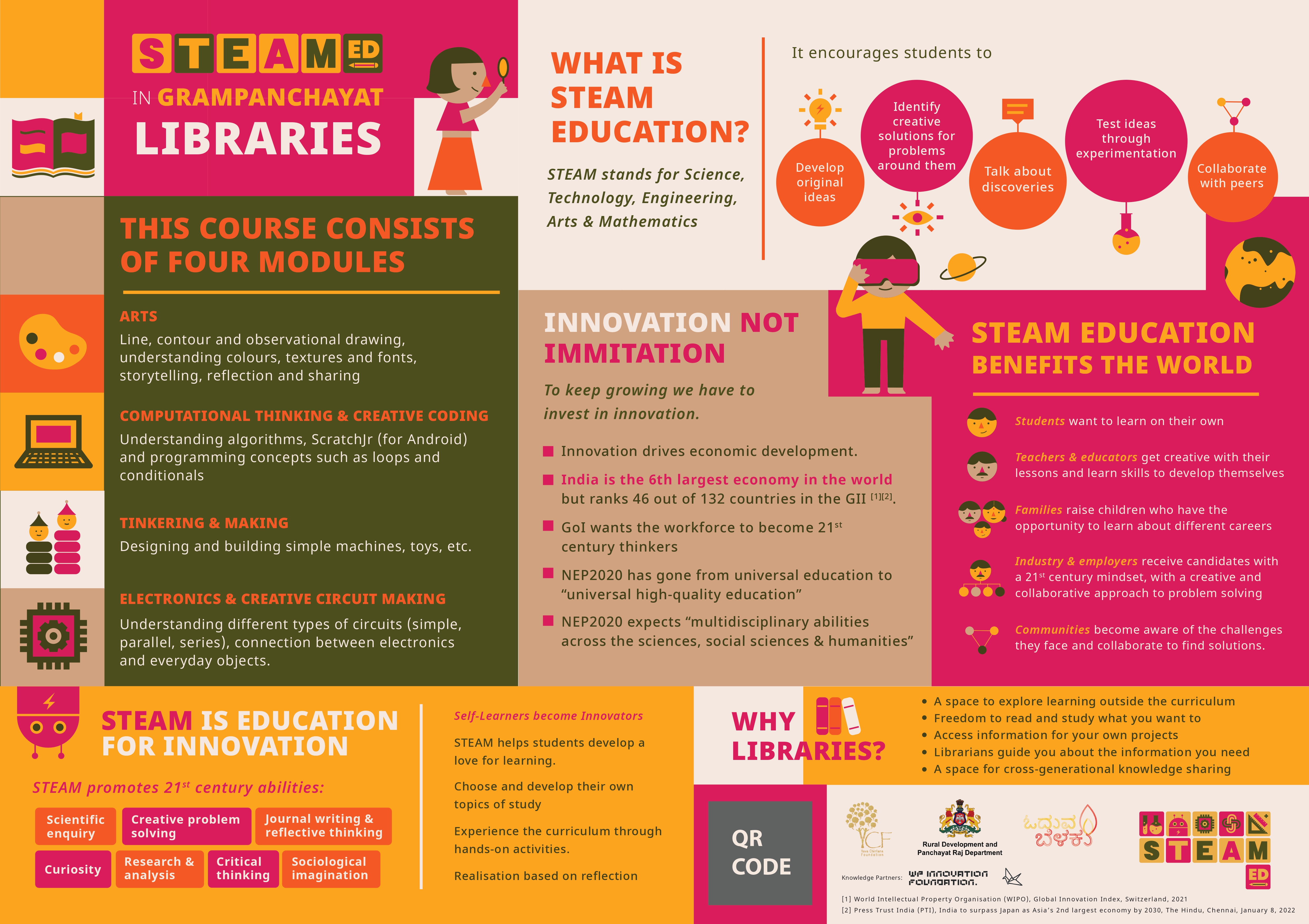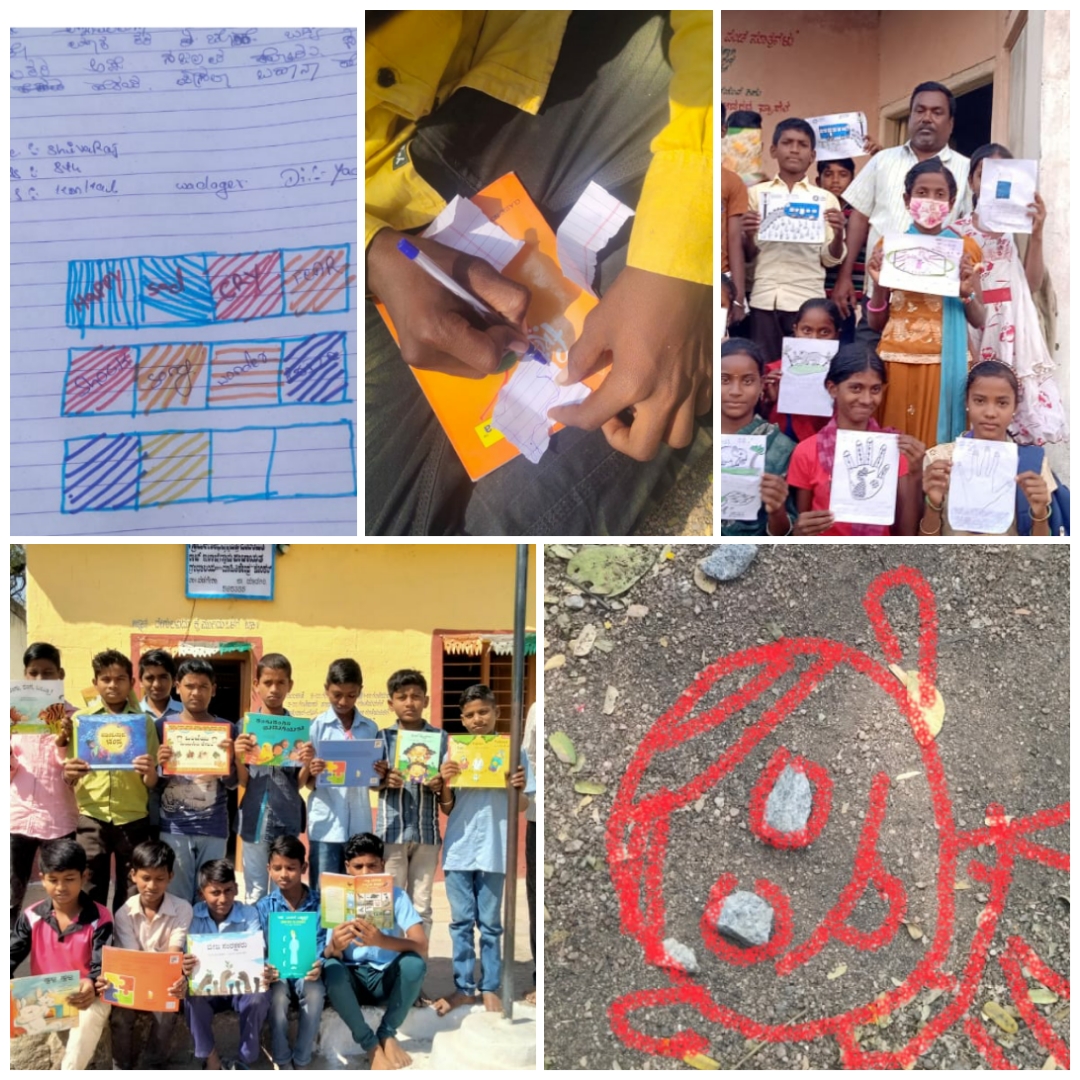STE(A)M-Ed Curriculum


With the support of the department of Rural Development and Panchayat Raj, government of Karnataka, the STE(A)M Education program is working towards energising gram panchayat libraries in Karnataka towards making them spaces for multi-disciplinary, multi-generational learning with an emphasis on hands-on, activity-based learning.
In 2021 YCF began developing its own curriculum. Bangalore-based Workbench Projects Innovation Foundation and Paper Crane Lab are the knowledge partners on this project. The STE(A)M-Ed curriculum seeks to meaningfully connect the sciences, mathematics, engineering, technology and the arts in a manner that encourages students and facilitators to
- Ask questions and be alert to the distinguishing features and challenges of the socio-cultural contexts they come from.
- Identify the process of learning as being independent of the outcome (if any) of their projects.
- Learn how to analyse, evaluate and draw conclusions from their own projects.
- Explore their multiple intelligences—spatial, musical, bodily-kinaesthetic, linguistic, interpersonal, intra-personal, naturalist, logical and existential—through the arts and allow their insights from their artistic explorations to inform and reinforce their understanding of concepts in other domains of learning.
Play, Passion and Purpose

The curriculum has been visualised in three stages over a period of seven years as part of a long-term, consistent engagement with students from government schools in some of Karnataka’s most backward districts.
The first stage focuses on play and an exploration of how technology works. This stage will focus on inculcating a sense of enjoyment of the whole process of learning. It will consist of activities, worksheets, theatre exercises and project-based explorations of technology that solve specific problems that will be identified by the students themselves, among other things.
The second stage will focus on giving students a sense of purpose by honing skills that have been developed in the first phase. This stage will consist of developing their passion for these subjects by giving students a more in-depth understanding of the hardware that makes electronic devices work and offering them a chance to design their own hardware. It will teach them how to write the code for computer and phone applications, among other things, culminating in a number of projects for which students will be required to create working prototypes of their ideas.
The third and final stage will help students channel their passion by helping them prepare portfolios in preparation for their applications to colleges and universities. This is an important stage as it gives purpose to all the rigor and dedication that these students display in the classroom and it will help them achieve the best possible outcome in their efforts to study further. This segment will help students communicate their ideas with clarity and precision. If they have been a part of this seven-year vertical growth cycle from the start then it is at this stage that their ideas will reflect their sophisticated grasp of higher-order thinking and problem-solving skills.


